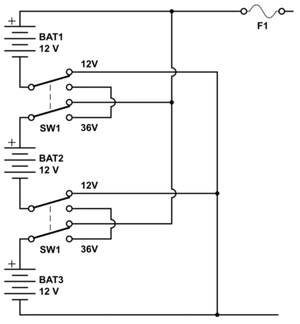Twelve years into the communications revolution sparked by the World Wide Web, companies are still searching for a product that will make it truly simple to create Web pages. The latest option, Bloki, is a useful tool for ad hoc page creation and collaboration, but it is not suitable for creating commercial Web sites or corporate intranets.
A free Web site (www.bloki.com) hosted by Zapatec Inc., Bloki aims to combine the ease of content creation offered by Weblogs–public Web diaries–with the collaborative strengths of wikis–sites on which anyone can change or create pages (hence Bloki’s name, a fusion of blog and wiki).
Bloki is indeed easy to use, but this simplicity comes at a price: Bloki lacks certain features that many users–corporate or not–will consider essential.
For example, eWEEK Labs found it impossible to create links between pages within Bloki. The only way to navigate from one to another is by using the file navigation frame that appears next to each Bloki page.
Bloki also lacks page templates, which makes it ill-suited for environments where a consistent look and feel across a site must be maintained. And, for now, Bloki sites are limited to being hosted on Bloki servers, which could be a problem if the service–or one of its Web sites–attracts more traffic than Bloki’s servers can handle.
A planned business-oriented version will add the ability to publish Web sites to domain names of your choice, support for Secure Sockets Layer encryption, a spelling checker and the ability to view real-time traffic statistics. Pricing for the business version, which Zapatec officials said will be available this quarter, will start at $10 per month. Zapatec also plans to offer a Bloki appliance for enterprises that want to host their own Bloki sites internally.
However, the current version of Bloki is fine for creating simple, quick Web work spaces. For a small project team that needs a simple, inexpensive collaborative work space without a lot of technological overhead, Bloki may be just the ticket.
Simple Setup
It took us all of 1 minute to set up a free Bloki account. Once our e-mail address was confirmed, we logged in and were immediately taken to our personal Bloki site.
To edit any page in the site, we clicked on the Edit link appearing above that page. A new window appeared, showing the contents of that page in an editable form. We were able to add and remove text, images and formatting in a fairly straightforward, WYSIWYG manner. Inserting new tables was easy, but modifying the attributes of an existing table (to add or remove borders, for example) required editing the HTML code directly.
We easily created Bloki pages from scratch by uploading HTML from our hard drive and by importing HTML from publicly accessible Web sites. We could change the overall look and layout of our Bloki site by selecting from a number of site templates, but the site provides no templates for individual page creation.
Bloki sites are publicly accessible by default. (The URLs take the form of username.bloki.com.) However, we could designate specific pages as “private” so that they would appear only to designated users–an important feature if Bloki is to be leveraged for corporate use.
We were able to invite colleagues to contribute to our Bloki site via a Web form that sent them e-mail invitations. We could also grant editing privileges, although Bloki doesn’t offer fine-grain access control. It is not possible, for example, to give a user the ability to change only a certain part of one page or to give him or her access to a certain section of a Bloki Web site.
Bloki does have basic file-locking and version-control features that make it usable as a collaboration tool. Bloki also provides a complete version history, which allowed us to see who made what changes, although Bloki doesn’t indicate exactly what was changed in each version.
A simple Weblog tool is accessible through a separate URL (username.bloki.com/blog). Contributing new posts was as simple as with any Weblogging software we’ve seen.
Weblog formatting options, however, were limited to changing the header, the footer and the collection of links at the side of the Weblog.
EXECUTIVE SUMMARY
Bloki
Bloki offers an extremely easy-to-use interface for creating Web pages and working on them collaboratively. However, Bloki achieves this ease of use by sacrificing features essential to corporate Web page creation software, such as template-based page creation and sophisticated management tools. For quick, informal collaborative projects, Bloki is a good choice (especially for the price–free).
KEY PERFORMANCE INDICATORS
USABILITY EXCELLENT
CAPABILITY FAIR
PERFORMANCE GOOD
INTEROPERABILITY GOOD
MANAGEABILITY POOR
SCALABILITY FAIR
SECURITY FAIR
PRO: Easy content creation; simple tools for ad hoc collaboration, file locking and version control.
CON: Lacks fine-grained access controls; no support for template-based page creation; lacks management and logging features.
EVALUATION SHORT LIST
* UserLand Software Inc.’s Radio UserLand * Pyra Labs’ Blogger * Macromedia Inc.’s Contribute
Contributing analyst Dylan Tweney can be reached at dft at tweney.com.
Link: Bloki eases Web page creation
Link broken? Try the Wayback Machine.


